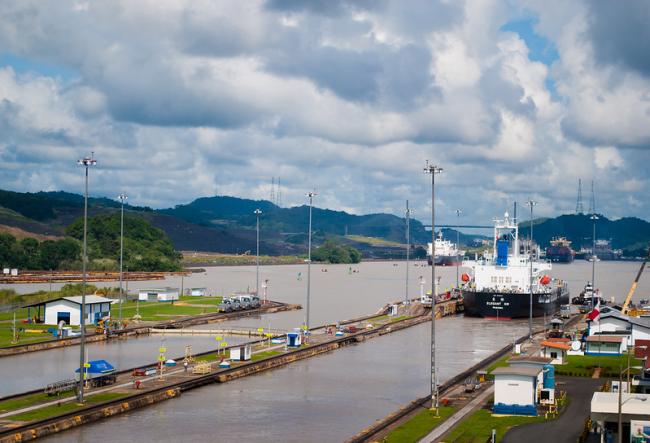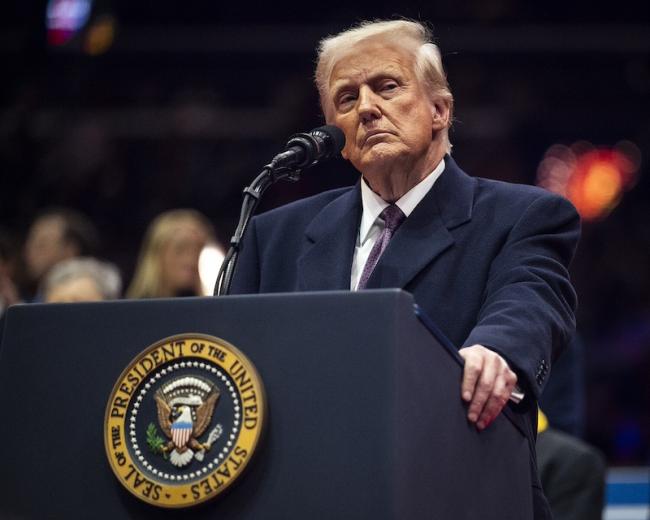
After his inauguration on January 20, Donald Trump sent shivers down the spines of Panamanian government officials by bringing the “issue” of the Panama Canal back up in his initial declarations. Moreover, his naming of new generation Cuban-American Cold War warrior Kevin Cabrera as ambassador, Secretary of State Marco Rubio’s visit this week, and even a Senate hearing without Panamanian representation indicate that this crisis may be the biggest threat to national sovereignty in Central America since the return of the Canal in 1999. Domestically, it is the biggest issue to rock the nation since the massive anti-mining protests of late 2023.
Leading up to his inauguration, Trump again flaunted his unique brand of real estate expansionism. His brand is a well-established one, although it mainly existed in discursive form. Some observers have dismissed this discourse as simply part of his traditional transactional foreign policy and a way to gain leverage back for the United States in the hemisphere. However, the current threats towards countries like Denmark and Panama—due to his desire to capture Greenland and retake the Canal—are more challenging to dismiss as the uncalculated ramblings of a fickle outsider with a penchant for isolationism. In the case of Panama, these threats brought back the old ghost in Washington which wants to turn back the clock on the Panama Canal treaties, won by Panama with the support of a decolonizing international community in the 1970s. Today, these treaties are again under threat, but the rise of global fascism and a new wave of gunboat diplomacy might tip the scales in favor of Goliath this time around.
Trump's Attack on the Canal's Sovereignty
Not anticipating this turn in U.S. foreign policy, Panama’s President José Raúl Mulino strengthened ties with the Biden administration in 2024. In his first action in office, he essentially moved the U.S. border to the Darién to stop the incessant irregular migration through the jungle with economic and logistical help from the United States. However, Trump now wants to move the border even further and restore the Panama Canal’s historical role as the site where the Mississippi River meets the Pacific.
This has put not only the executive but some of the most prominent and popular lawmakers in awkward positions. One of the most interesting parts of the aftermath of the initial declarations by Trump was the ideological contortions that some of the new, independent reformers in Panama’s legislature, including Edison Broce and José Pérez Barboni, did to position themselves after their political idol’s geopolitical betrayal. This experience might remind politicians and the electorate why, in Panama’s political history, even the conservatives opposed U.S. influence, with some exceptions.
Trump’s attack on the isthmus’s sovereignty is its greatest threat since the Noriega affair in the late 1980s, which made many question whether the scheduled transfer of the Canal in 1999 would take place at all. In the local news cycle, however, this news had to coexist with two other major debates: the reforms of the country’s public social security institution, the Caja de Seguro Social, and the possible reopening of the largest copper mine in Central America. This mine closed in response to the massive street marches of November 2023. The Caja’s reform is a significant problem due to the merging of pension and public health care in one institution, whose murky finances make debates difficult and different sides suspicious of each other. These debates were in the process of terminating Mulino’s honeymoon period with the electorate. The labor unions, the only active anti-imperialist organizations in the country, were actively in the streets protesting the government’s proposals.
After Trump’s unexpected declarations, Panama’s headlines suddenly featured some of the same nationalist and anti-imperial tropes of the twentieth century, in which a unified country stood together against the giant from the North, once again dominated headlines and TV debates. For example popular interview and debate shows have featured many discussions on “strategies” the nation should take against this threat. The labor unions now appeared on the streets burning U.S. flags, instead of mobilizing against the Panamanian government’s attempts to further privatize the health sector. However, the local response has also evidenced cracks in the once formidable canalero consensus or ideology, driven by domestic politics.
The Response At Home
Most of the press coverage of this situation, which for Panama constitutes a major diplomatic crisis, has centered on the rationale or legality behind Trump’s actions or the reaction inside the United States. In his response, President Mulino affirmed that the Canal would remain Panamanian and that there would not be any negotiations to allow the United States to buy it back. This position has garnered international attention and sympathy. In reality, the reaction inside Panama is more complex than that represented in the international press, which has been somewhat simplistic and generalized.
While it is true that indignation and repudiation in Panama could be described as “widespread,” there is an underbelly to this reaction that merits unpacking. Besides Trump’s intent to roll back international relations back to the nineteenth century, the discussion in Panama has been directed by media elites to chastise seemingly apolitical Panamanians who have expressed indifference or even favor to Trump taking over the Canal, from which many allege they have received nothing during the period of Panamanian control beginning in the year 2000. Some even point to the areas of the former Canal Zone, which are now part of Panama City proper and are better planned than others, as evidence that the United States leaves things better than they find them.
The international reaction to many of Trump’s claims has centered on the fact that most are demonstrably false. The Canal was not a gift from the United States to Panama, as the latter had to struggle for a century to gain control and lost lives in this anti-colonial movement, which did not reach a conclusion until 1999. The burden of casualties during its construction was not borne by U.S. citizens, as these were predominantly West Indian laborers who were even rejected by the Panamanian state during this time. The Chinese do not control the Canal, despite the growing influence they might have in the country via commercial and non-economic interests. They also do not get preferential treatment in tolls, as these only vary due to tonnage and set of locks used and have fixed prices that account for hundreds of variables—one of the most important ones now being the limited quantity of freshwater in the lakes.
One of Trump’s claims—that the Chinese have a presence on ports on both sides of the Canal—was one of the few truthful claims he made. From a strategic standpoint, the readiness of this commercial infrastructure to double as military infrastructure in times of war must certainly worry U.S. geopolitical interests. While Chinese investment is steadily increasing and has already refashioned the Panamanian economy, liberal talking heads and intellectuals in Panama have long pointed to this interoceanic presence by the Chinese as a geopolitical, if not strategic and economic, mistake.
In their view, Panama must balance both U.S. and Chinese capital and physical presence, with the tacit understanding that it is the former we must not anger, even in times of Democratic Party-controlled presidencies stateside. While all the Panamanian governments have been very U.S.-friendly, the administration of Juan Carlos Varela (2014-2019) coincided with a period of Chinese ascendancy. Panama’s traditional U.S.-friendly diplomacy prevented his allies from cooperating with the Chinese as other countries in the region. Thus, Varela proved eager to shift Panama’s recognition of Taiwan towards the One China idea, understanding that opening the faucet of Chinese capital could enlarge his wealth and empower his party. Trump’s first term and Varela’s overlapped, but the U.S. did not pose a threat to Panamanian interests, as Trump even failed to name an ambassador during this period.

Outsiders could be excused for assuming Panama would form a unified front against U.S. imperialist threats, given the country’s successful anti-colonial struggle and relative economic development and wellbeing. Yet Trump’s declarations have split the country. There has historically been a section of the country, populated mainly by the upper and upper-middle classes, that has been an ally of the most recalcitrant U.S. chauvinism. These groups voiced opinions opposing Panamanian control of the Canal, as their position as middlemen between Panama and U.S. citizens living on the isthmus could be undermined by the latter’s departure. They also honestly doubted Panamanians could run the Canal as well as the United States.
The business sector and the oligarchy have kept quiet, not supporting the President’s forceful initial posture. The ranks of this brand of anti-nationalist Panamanians suffered a significant blow after the Panama Papers affair, highlighting the changing place of Panama’s commercial and transit hub in the world economy. On the contrary, the split has been driven by Panamanians who do not reflect the economic indices that place Panama at the top of measures such as GDP per capita and wages in the region.
Panama’s national narrative posits that the Panama Canal is not only capably run by Panamanians but that the Panamanian-run Canal is even better, as it is run by a business and governed by a non-partisan institutional structure, seemingly isolated from political matters. This technical prowess is defended even considering the water management issues that are now an annual feature of the system. This split in the Canal’s governance, between electoral politics and technocracy, is a colonial legacy imposed by the United States, whose leaders still distrusted Latin American politics as inherently revolutionary into the late twentieth century.
However, in Panama, deep resentment exists about how the earnings from the Canal are used and how it is run. The cracks in the canalero ideology are often presented as sacred, even when discussing potentially controversial topics such as its significant expansion, which had to be decided by a plebiscite. The Canal Authority’s board is often singled out for its closeness to the political and oligarchic classes and their bloated salaries. Yet, the Trump-instigated Panama Canal crisis has failed to even galvanize the masses as much as the mining protests of 2023, a much more fringe issue in the country than the waterway, at least until that event.
Francisco Javier Bonilla is a historian of water in Panama and holds a Ph.D. in Latin American Environmental History in the Department of History at Carnegie Mellon University. He also studied history and political science at the University of Louisville, Kentucky.

